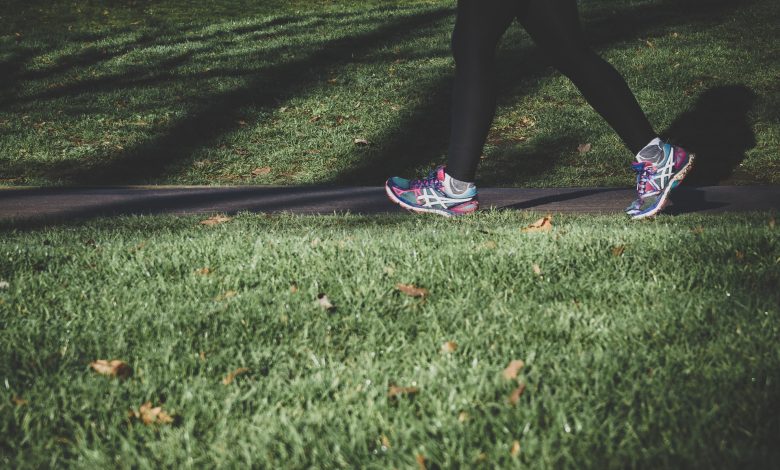Do You Hate Exercising? Try Walking Instead! Read This!

Depending on how long and how intensively you walk, as well as your diet, you might be able to lose weight this way. Weight loss appears to be aided more by a combination of physical activity and calorie reduction than by exercise alone.
Walking is a terrific type of exercise that is free, low-risk, and accessible to the majority of people. Walking is not only excellent for you, but it’s also one of the most simple types of exercise to include in your daily routine.
In this article, we’ll look at how increasing your walking frequency can help you lose weight and tummy fat. If you hate extreme workouts and you don’t have any gym equipment, then walking might be the best option for you. Keep on reading to know more.
Walking helps you lose abdominal fat
An elevated risk of diseases including type 2 diabetes and heart disease has been linked to storing a lot of fat around your belly. Abdominal obesity is defined as a waist circumference of more than 40 inches (102 cm) for men and 35 inches (88 cm) for women.
Regular aerobic activity, such as walking, is one of the most efficient strategies to reduce abdominal fat.
Women with obesity who walked for 50–70 minutes three times per week for 12 weeks on average lowered their waist circumference and body fat, according to Healthline.com. In comparison to the control group, the exercise group had much less fat under the skin (subcutaneous) and hidden fat within the abdominal cavity (visceral).
Another research discovered that people on a calorie-controlled diet who walked for an hour five times a week for 12 weeks lost more inches off their waistlines and body fat than those who followed the diet alone.
Walking might help you in losing weight
Many people who lose weight gain it all back after a while. Regular exercise, on the other hand, is critical to maintaining weight loss.
Daily exercise, such as walking, not only helps you burn more calories on a daily basis, but it also helps you grow more lean muscle, allowing you to burn more calories even when you’re not moving.
Additionally, regular moderate-intensity exercise, such as walking, might enhance your mood, making you more likely to continue active in the long run.
How far should you walk every day?
Any conversation about walking usually begins with a lofty goal: 10,000 steps, or nearly five miles. However, that quantity does not always equate to truly beneficial cardiovascular activity.
The explanation for this is straightforward: not all steps are made equal. Slowly shuffling around a store, for example, will increase your step count, but it won’t help you lose weight or get in shape.
At the very least, you should aim for 150 minutes of moderate aerobic activity every week. This is in accordance with the American Heart Association’s recommendations. However, that goal is for heart health, not weight loss.
To lose weight, the activity target is increased somewhat. For weight loss and long-term weight management, the American College of Sports Medicine recommends 200 to 300 minutes of exercise each week.
The trick is to stay involved. The more you move, the better off you are.
How to make more walking a part of your daily routine
Aside from weight loss, being more physically active provides a number of advantages, including:
- better physical and mental health
- a lower chance of becoming sick
- a better chance of having a longer, healthier life
As a result, it is recommended that adults exercise for at least 150 minutes each week at a moderate level.
In terms of walking, this translates to 2.5 hours of brisk walking each week (at least 10 minutes at a time). Further exercise gives extra health (and weight) benefits and lowers your illness risk even more.
Any conversation about walking usually begins with a lofty goal: 10,000 steps, or nearly five miles. However, that quantity does not always equate to truly beneficial cardiovascular activity.
The explanation for this is straightforward: not all steps are made equal. Slowly shuffling around a store, for example, will increase your step count, but it won’t help you lose weight or get in shape.
At the very least, you should aim for 150 minutes of moderate aerobic activity every week. This is in accordance with the American Heart Association’s recommendations. However, that goal is for heart health, not weight loss.
To lose weight, the activity target is increased somewhat. For weight loss and long-term weight management, the American College of Sports Medicine recommends 200 to 300 minutes of exercise each week.
The trick is to stay involved. The more you move, the better off you are. It’s recommended to count minutes rather than steps.
There are a variety of techniques to boost your walking and reach this goal.
Here are some suggestions:
- To motivate yourself to exercise more, use a fitness tracker and log your steps.
- Make it a habit to go for a quick stroll during your lunch hour or after dinner.
- Invite a friend to accompany you for an evening stroll.
- Take a walk with your family and children.
- Every day, take your dog for a walk or join a friend’s dog walk.
- Instead of meeting at your desk, go for a walk with a coworker.
- Carry out errands by foot, such as sending the kids to school or going to the store.
- Take a walk to work. If the distance is too far, park further away or get off the bus a few stations early and walk the rest of the way.
- To keep your walks interesting, choose different and challenging routes.
- Become a member of a walking club.
- Absolutely every single bit helps, so start slowly and steadily increase your daily walking distance.
On the Note
A person should consult their doctor or other healthcare experts before adding weight or increasing intensity through pace or incline.
A person’s walking frequency, as well as the number of miles or steps they do each day, should be increased. Faster walks or higher inclines can be included in a few days a week to add some intensity.
Do you find this article helpful? Please help us share it with other readers too!






